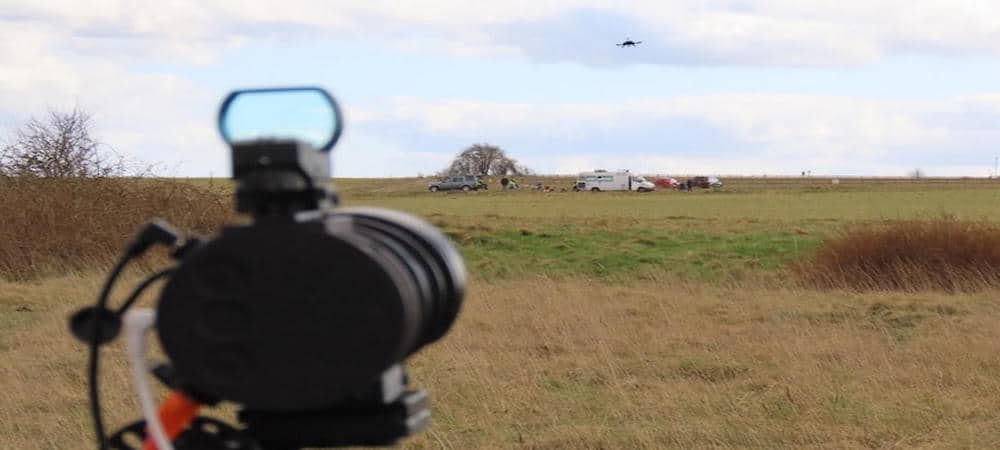



QinetiQ has delivered what it claims is the first successful demonstration of an airborne unmanned platform being controlled via a laser communication system.
The demonstration saw a ground based operator control an airborne Unmanned Aerial System (UAS) transmitting control commands and receiving sensor and platform information that included Free Space Optical Communications (FSOC) as a bi-directional link in its mission communication system.
FSOC provide very high bandwidth, very low probability of detection communications, low logistical footprint and the potential to negate the considerable investment that adversaries may have made in denying the RF spectrum, strengthening military capability for covert, low detection probability operations in the future.
The control of an airborne unmanned platform has in the past been enabled via the use of Radio Frequency (RF) technologies, which are prone to detection and interference. This demonstration used an integrated FSOC system as a means of operation in a contested RF environment where there is a need for secure, covert operations.
The demonstration formed part of the DSTL Air Command and Control (C2), Intelligence Surveillance & Reconnaissance (ISR) and Interoperability project. The project objectives include improving both the digital interoperability and resilience of the communication systems that connect air platforms and associated capabilities (both current and potential).
The outputs of the project are supporting exploitation activities within the UK Ministry of Defence Front Line Commands, including Air, Land, Maritime and Joint.
“This innovative use of FSOC builds on the earlier Crewed-Uncrewed Teaming demonstrations that provided UK and European firsts in the live airborne control of UAS,” said Dave Dixon, QinetiQ Technical Lead for the project. “It also showcases the talent and capability available in the UK and provides further evidence that teams comprising both humans and machines are an essential part of how militaries operate in the future.”
“To make it possible, we had to take a mission-led innovation approach and work very closely with Dstl and partners,” said Rob Scott, QinetiQ Program Manager. “We’d also like to thank AVoptics for their support and rapid integration of their WOLF FSOC system into the demonstration.”
The demonstration was a live-virtual event, using interoperable message standards to task a number of virtual platforms and the live UAS, using QinetiQ ACCSIOM swarm technology. The extensive ground and air space was provided by the British Army within Salisbury Plain Training Area (SPTA).





Related Posts
New Drone Fires Thales Missile in Unmanned Air Combat Milestone
UAS Startup Accelerator Awards 3M in Funding
US Navy Orders Unmanned Tactical Resupply Aircraft